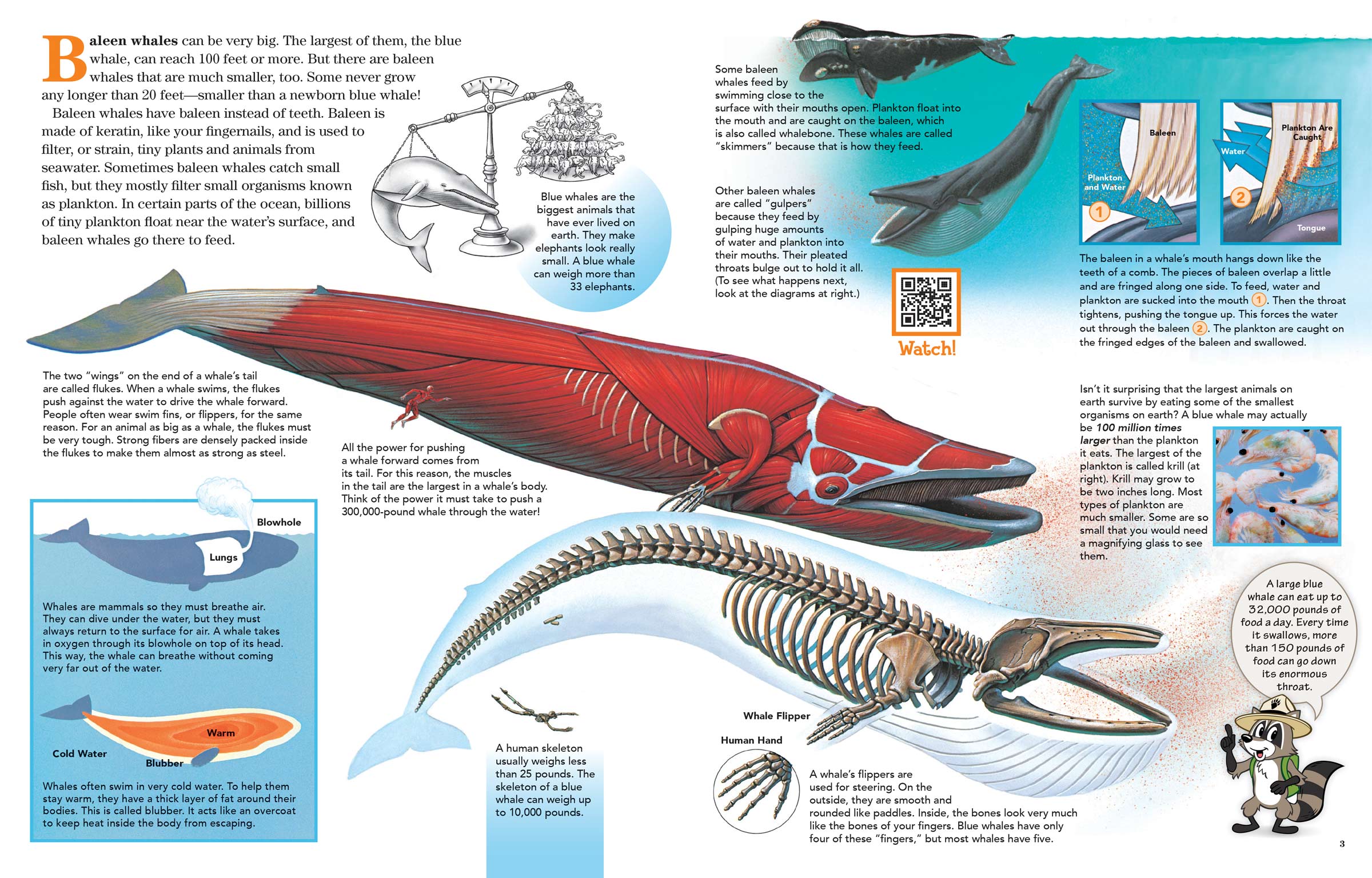
Baleen Whales
ByBaleen whales can be very big. The largest of them, the blue whale, can reach 100 feet or more. But there are baleen whales that are much smaller, too. Some never grow any longer than 20 feet—smaller than a newborn blue whale!
Baleen whales have baleen instead of teeth. Baleen is made of keratin, like your fingernails, and is used to filter, or strain, tiny plants and animals from seawater. Sometimes baleen whales catch small fish, but they mostly filter small organisms known as plankton. In certain parts of the ocean, billions of tiny plankton float near the water’s surface, and baleen whales go there to feed.
Blue whales are the biggest animals that have ever lived on earth. They make elephants look really small. A blue whale can weigh more than 33 elephants.
The two “wings” on the end of a whale’s tail are called flukes. When a whale swims, the flukes push against the water to drive the whale forward. People often wear swim fins, or flippers, for the same reason. For an animal as big as a whale, the flukes must be very tough. Strong fibers are densely packed inside the flukes to make them almost as strong as steel.
All the power for pushing a whale forward comes from its tail. For this reason, the muscles in the tail are the largest in a whale’s body. Think of the power it must take to push a 300,000-pound whale through the water!
Whales are mammals so they must breathe air. They can dive under the water, but they must always return to the surface for air. A whale takes in oxygen through its blowhole on top of its head. This way, the whale can breathe without coming very far out of the water.
Whales often swim in very cold water. To help them stay warm, they have a thick layer of fat around their bodies. This is called blubber. It acts like an overcoat to keep heat inside the body from escaping.
A human skeleton usually weighs less than 25 pounds. The skeleton of a blue whale can weigh up to 10,000 pounds.
The baleen in a whale’s mouth hangs down like the teeth of a comb. The pieces of baleen overlap a little and are fringed along one side. To feed, water and plankton are sucked into the mouth 1. Then the throat tightens, pushing the tongue up. This forces the water out through the baleen 2. The plankton are caught on the fringed edges of the baleen and swallowed.
Some baleen whales feed by swimming close to the surface with their mouths open. Plankton float into the mouth and are caught on the baleen, which is also called whalebone. These whales are called “skimmers” because that is how they feed.
Other baleen whales are called “gulpers” because they feed by gulping huge amounts of water and plankton into their mouths. Their pleated throats bulge out to hold it all. (To see what happens next, look at the diagrams at right.)
Isn’t it surprising that the largest animals on earth survive by eating some of the smallest organisms on earth? A blue whale may actually be 100 million times larger than the plankton it eats.
The largest of the plankton is called krill (above). Krill may grow to be two inches long. Most types of plankton are much smaller. Some are so small that you would need a magnifying glass to see them.
A large blue whale can eat up to 32,000 pounds of food a day. Every time it swallows, more than 150 pounds of food can go down its enormous throat.
A whale’s flippers are used for steering. On the outside, they are smooth and rounded like paddles. Inside, the bones look very much like the bones of your fingers. Blue whales have only four of these “fingers,” but most whales have five.

